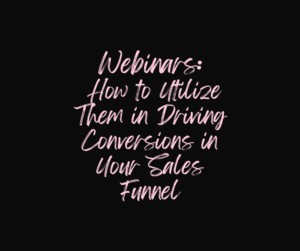7 Key Principles for Effective Web Design
In today’s digital age, a well-designed website is more than just a digital presence; it’s a gateway to your brand’s identity and a powerful tool for engaging your audience. Effective web design encompasses a blend of aesthetics, functionality, and user experience, leaving a lasting impression that captures visitors’ attention and keeps them coming back for more. Let’s delve into the key principles that contribute to a captivating online presence.
1. Clear Navigation for Seamless and Effective Web Design Exploration

Navigation is the backbone of any website. It guides visitors through your content and helps them find what they’re looking for. A well-structured navigation menu simplifies the user journey and ensures a seamless exploration experience. Include concise menu labels and organize content logically to prevent confusion and frustration. Whether it’s a simple header menu or a hamburger menu on mobile devices, clear navigation is essential to keep visitors engaged.
2. Aesthetics: The Visual Delight

The visual appeal of your website plays a significant role in captivating your audience. A harmonious color palette, engaging imagery, and thoughtful typography create a visual delight that resonates with visitors. Consistency in design elements, such as buttons and icons, reinforces your brand’s identity and enhances the overall user experience. A well-designed website is a canvas that captures attention and communicates your brand’s personality.
3. Strategic White Space

White space, or negative space, is the area between design elements. It provides a visual breather, allowing content to shine and guiding users’ focus. Embrace strategic white space to prevent clutter and enhance readability. Adequate spacing between text, images, and other elements creates a balanced and inviting layout. Remember, less is often more, and well-utilized white space contributes to a cleaner and more enjoyable user experience.
4. Consistent Branding Across Platforms

Branding consistency is essential for brand recognition and trust-building. Your website should align with your brand’s visual identity, incorporating your logo, color scheme, and typography. Consistent branding across your website and other online platforms reinforces your brand’s message and fosters a sense of familiarity. When visitors encounter a unified brand presence, it enhances their connection with your brand and encourages engagement.
5. Engaging Content that Tells a Story

Compelling content is at the heart of effective web design. Create content that tells your brand’s story and resonates with your target audience. Utilize captivating headlines, concise paragraphs, and visual elements to communicate your message effectively. Incorporating multimedia such as videos, infographics, and interactive elements enhances engagement and leaves a memorable impression. Engaging content sparks curiosity and encourages visitors to explore further.
6. Mobile Optimization for Accessibility

In today’s mobile-driven world, mobile optimization is non-negotiable. A responsive design ensures that your website adapts seamlessly to different screen sizes and devices. Mobile-friendly layouts, touch-friendly elements, and fast loading speeds on mobile devices enhance user experience and accessibility. Prioritizing mobile optimization not only caters to a broader audience but also positively impacts your search engine rankings.
7. Fast Loading Speeds for Instant Gratification
Visitors’ attention spans are short, and slow loading speeds can lead to frustration and high bounce rates. Optimize images, minimize code, and utilize browser caching to improve your website’s loading times. A fast-loading website provides instant gratification, encouraging visitors to explore and engage with your content. Prioritize speed as part of your web design strategy for a seamless and enjoyable user experience.
Incorporating these key principles of effective web design empowers you to create a captivating online presence that engages and resonates with your audience. Clear navigation, aesthetics, strategic white space, consistent branding, engaging content, mobile optimization, and fast loading speeds collectively contribute to a memorable user experience. By crafting a website that combines creativity with purpose, you leave a lasting impression that sets the stage for meaningful connections and business growth.
Explore the possibilities of effective web design and embark on a journey that enhances your brand’s digital presence. With every click and interaction, you have the opportunity to captivate hearts, inspire action, and make a lasting impact in the online realm.















